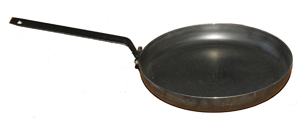Category
Docs and Info
Natural timber products, hand finished – the story:
We personally collect fallen natural timber pieces from all over the country and hold them in cool dry storage for suitable time to complete the drying out process and stabilise to be suitable for working.
Pieces are regularly checked and released from storage once the moisture content has reduced to below 20%.
As expected with wild collected items, each piece is quite unique in density, diameter and shape which creates endless challenges for cutting of regular thickness rounds from the length.
Beginning with docking off rough and badly fractured end pieces the lengths are sectioned into manageable billets with clean cut ends which can be easily handled and positioned making for more accuracy of slicing to achieve greater uniformity of thickness.
The rounds are then subjected to a smoothing routine through various grades of sanding media until all saw marks have been removed and the surface has a silky feel to the touch.
At this stage the rounds go to the etching roo m where our details and the timber type are laser etched on to one surface and where required motifs etched on the other.
Next our beeswax based timber dressing is applied to the smoothed surfaces and allowed time to penetrate the wood fibres before the rounds are heated to reduce remaining moisture and settle the wax.
Then back to the polishing room for one final buffing before being made ready for sale..
Made in Melbourne
Caring for your natural timber items
Suitable for use as drink coasters, candle stands, table decoration or tactile pocket pieces.
Spilled liquids may cause marking of the surface finish – this can generally be easily remedied by a light application of linseed or olive oil and then the surface buffed with a soft cotton cloth.
Where used with candles be aware brightly coloured candle wax may permanently stain into the wood grain. Neutral colours are the least impacting – white, beige, natural are best.
How to prepare black steel cookware for first use

Black steel (sometimes known as blue steel or gun metal) is very simple to ‘season’ taking only a short while, with nothing more than some hot water, detergent and olive oil.
- Firstly wash the pan or oven thoroughly in hot water with a grease cutting dish washing detergent. (This will remove remnants of grease and metal finings from the manufacturing process and will appear quite black.) Once properly washed the steel will take on a light grey color and when wiped over with paper towel will not leave any residue.
- Make sure all surfaces are completely dry and apply a coating of olive oil using paper towel.
- At this point the item can be heated over a cooktop for 5-10 minutes (not to hot) to cure in the oil or placed in a hot oven for 10 minutes for the same result.
- Once cooled recoat all surfaces with olive oil before storing.
How to store black steel cookware
Once finished use of the item follow these steps to ensure the best storage.
- Make sure to remove all foodstuffs from all surfaces by wiping out with paper towell or washing with hot water if required.
- Completely dry all surfaces of water and wipe over with olive oil.
- Store in a dry place.
Restoring neglected black steel cookware
If your black steel item has gotten damp and rusted these tips will bring it back to operational status.
- In most cases of rust on black steel it will be only be a dusty type of surface rust which can be removed using a ball of dry steel wool rubbed over all surfaces until the steel appears through and the rust dust can be blown away. (If the rust is more serious use of some 80 grit sandpaper can be used first and followed up with the steel wool treatment)
- Once finished with the steel wool give the item a good wash in hot water and detergent, dry thoroughly and apply a coating of olive oil on all surfaces.
- Store in a dry place
Why should I test tap water before filling the RV tank?

In Australia we are fortunate in that water delivered to us from nominated ‘drinking water supplies’ is safe and potable to consume.
However that doesn’t mean it is pure and free of contamination with mineral substances that cause the water to be ‘hard’, contain dissolved solids, have particulate matter in suspension or carry a load of biological purification chemicals such as chlorine which can really muck up the taste of your cuppa, corrode tap fittings and damage appliances used to heat water through both corrosion and build up of mineral scale on elements and in pipes.
Once poor quality water has been introduced to the plastic water tanks in caravans and RVs it can take some effort (and time) to restore the tanks back to their pristine state. In many cases the tank may need to be flushed several times to remove sediments and scents tainting the tank lining.
Even though these contaminants may not be harmful to most people there are some who are very sensitive and cannot tolerate even minuscule amounts.
For the rest of us it defiles drinks made with the water as does it change the flavour and enjoyment of food washed or cooked in it.
bushwares.com.au